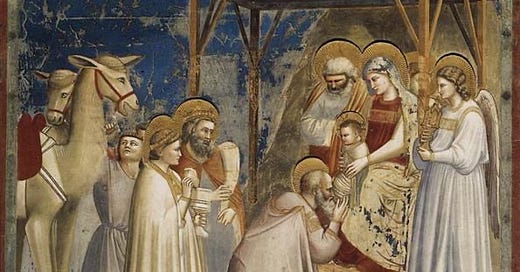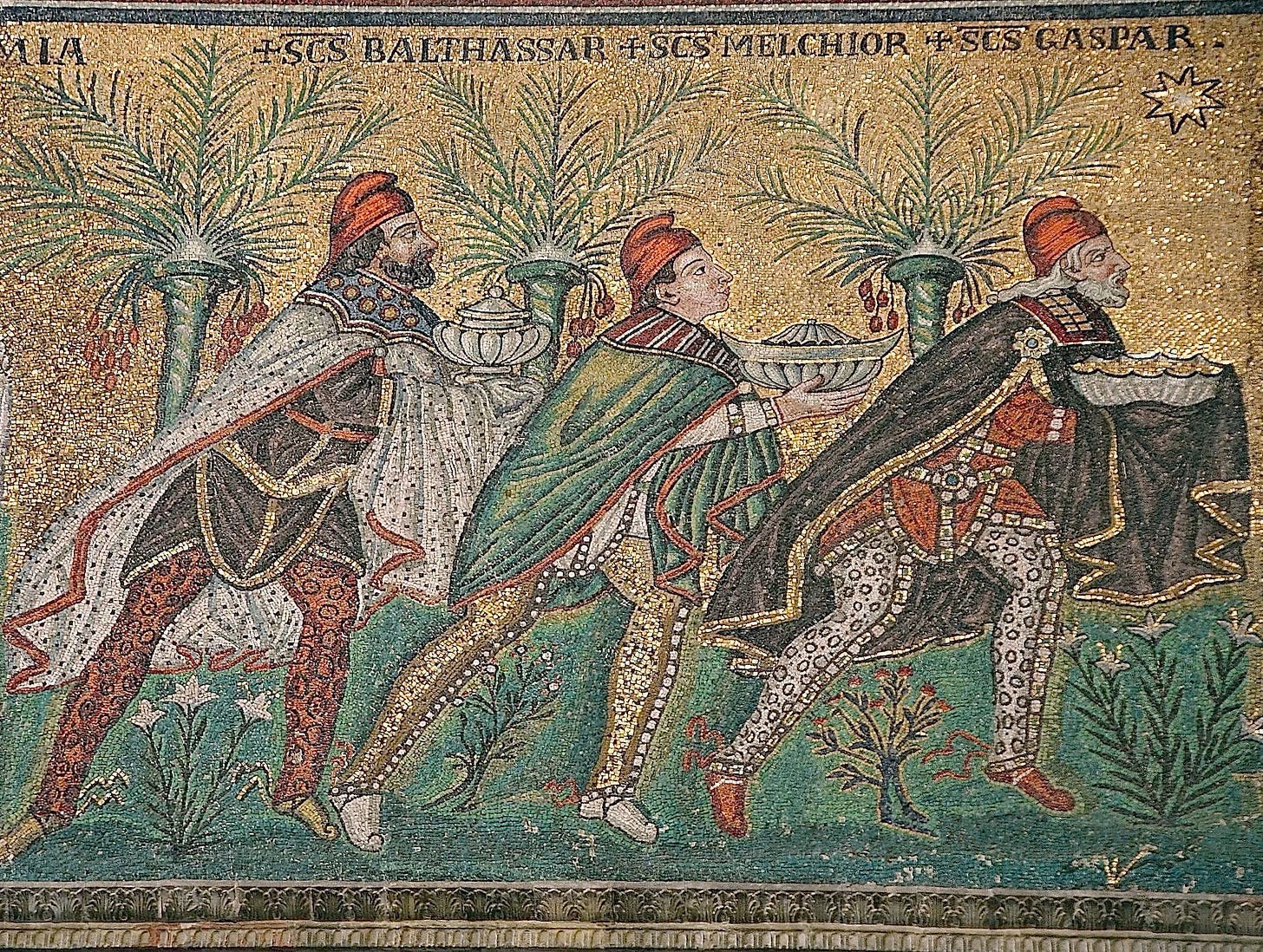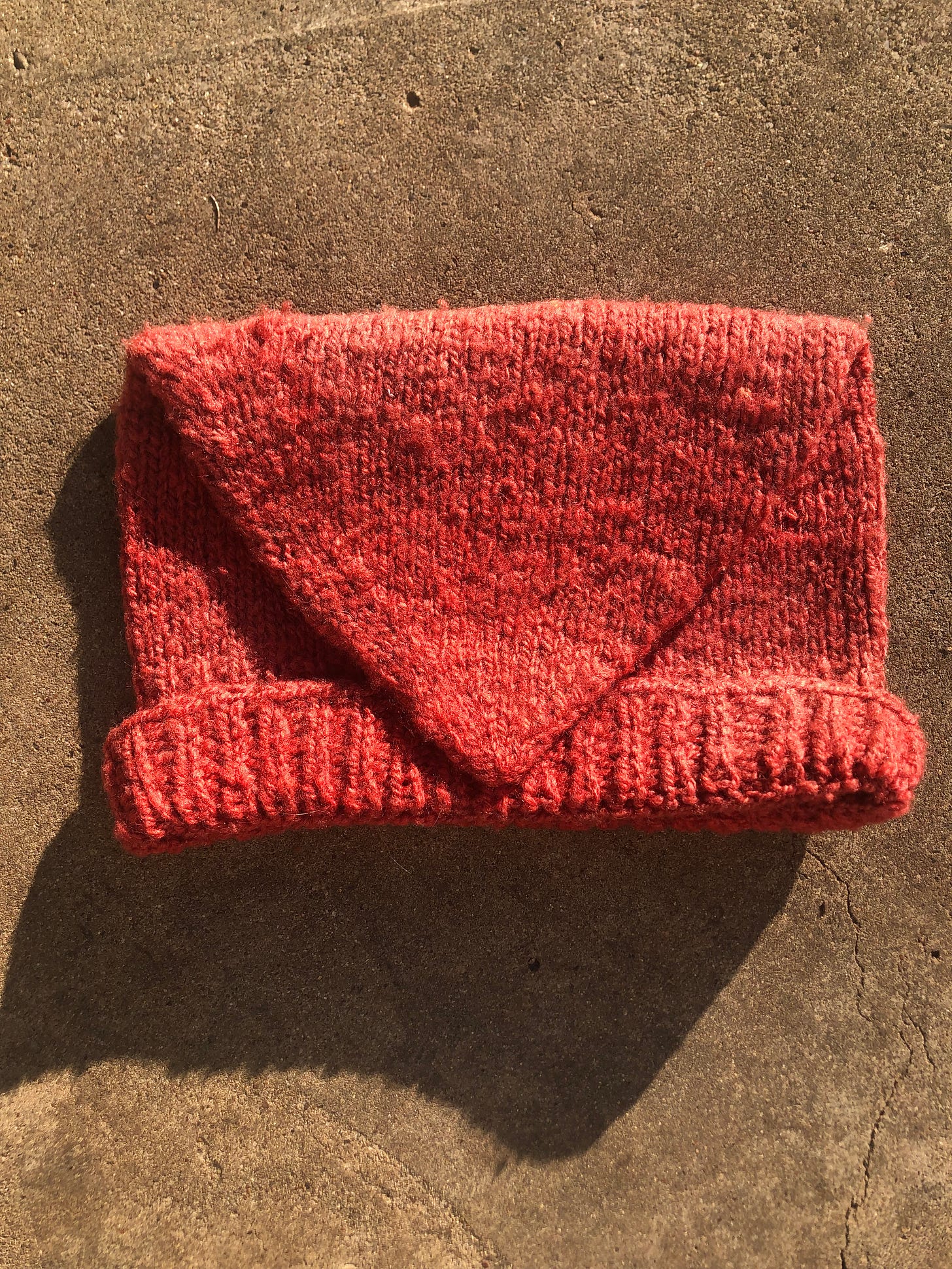Happy Winter Holidays!
There is so much to celebrate, even when things seem uncertain. In the season for ugly sweaters and festive headgear, it seemed right to think about what we say with what we wear.
Artists have, over the years, painted versions of the Nativity of Christ that reflect the times they lived in. My personal favorite is Giotto’s, under the influence of Saint Francis, he paints Italian peasants and noble folk into the story.
Fashion statements
Possibly the earliest form of communication was fabric. What a person is wearing (even if it is rags, robes, or nothing at all) it communicates an idea, a status or a cause. Before humans developed written language they attached fabric to their body. The earliest known “garment” was a string skirt. Which came to be associated with female roles in the community.1 This is so built into our DNA that we hardly think about it, and yet, we think about it all the time.
In traditional societies, before fashion trends were marketed from centers of industry, clothing reflected the world one lived in. Traditional Scottish Tartans were dyed with plants that were found nearby and literally could reflect one’s region. Knitting patterns for wool guernseys helped identify the bodies of sailors lost at sea.
In Northern Africa, cotton cloth was marked with a special dye made from tea and the iron rich mud of the river, featuring symbolic patterns of protection and hope. 2
In the 21st century we have such a wide range of choices for garments, it can be overwhelming. Folk with limited means may wear knock-off sneakers and thrift store clothes, which then can become a fashion statement3 trend, and wear those very same clothes with pride.
Religious groups use clothing to communicate piety or penitence to other believers. And, not only do the faithful dress according to their beliefs, they dress up statues of saints and gods to demonstrate this devotion.4
The Liberty Cap
This jaunty red cap is called the Phrygian Cap and is associated with the concepts of liberty and inclusion. It has a rich history. It is not a particularly practical form of head gear, but a symbol of freedom and republics (such as the Trojans and Greek City States). On a coat of arms, this hat will appear instead of a crown, symbolic of inclusion and human rights. The Three Magi are portrayed wearing this cap in a Mosaic from Ravenna, Italy representing their international origins.
The knitted form of this hat was popular in the American Revolution5 as well as the French Revolution. Maybe this is what Madame Defarge was knitting under the guillotine!
Political Intrigues
It is impossible to separate the language of clothing from politics. Long red ties, monochromatic pantsuits, and flag lapel-pins are all designed to communicate the character and intentions of the wearer over the airwaves no matter what that person is saying on screen. 6
Fashion on Parade
When I travel, I entertain myself with what I call “people watching” but truth be told, I am simply reading the sartorial messages every fellow-traveler is communicating with the world.
One year, on Christmas Day, we were on the road between family and home. We had hopes to make it to Jackson, TN for the lunch buffet at The Casey Jones Museum and Restaurant. We arrived at 2:30, too late. But, we found that (as always) the Waffle House was open. We piled in, hungry and tired, feeling less than festive. Just inside the door we were greeting with a Christmas blessing. Here stood a monument to the glories of the gospel. A woman, resplendent in a green suit, with a hat to match. She had a huge corsage of glitter covered poinsettias.
I had to get to know her. I learned that she would go to the Waffle House every year to greet travelers and others who had no other choice for Christmas Lunch. Her warm smile, exuberant holiday garb and effusive greeting warmed our weary souls. I will never forget her.7
Happy New Year, y’all!!
See my previous post about String Skirts.
This should be an entire new post but here is some info on Mud cloth.
The term Fashion Statement indicates that we are always considering what our clothes are saying to others. I have always been proud of thrifted clothes, but, I am sure some folks don’t share my enthusiasm. I am a subscriber to the Haptic &Hue Podcast, where our hosts explore the minutia of textile history. I strongly recommend!
I made this toque for my spouse a while back. When the kids were small, we took up Living History as a hobby and I made proper outfits for all of us. He is a scholar of American History and speaks at civic group about the life of the common Continental Soldier. The cap is knitted from my hand-spun yarn dyed with madder root.
A recent example that caused quite a stir: I Really Don’t Care do You?
I finished this post was the news broke about the passing of Jimmy Carter, seems fitting to honor him with the recollection of a Southern black woman doing good work for the community. What an example of selflessness.






